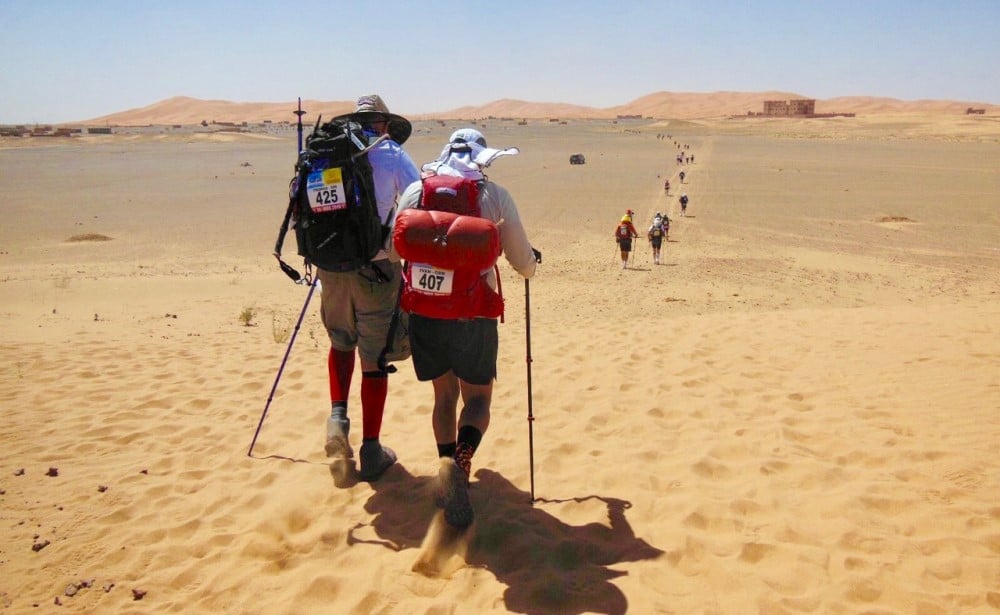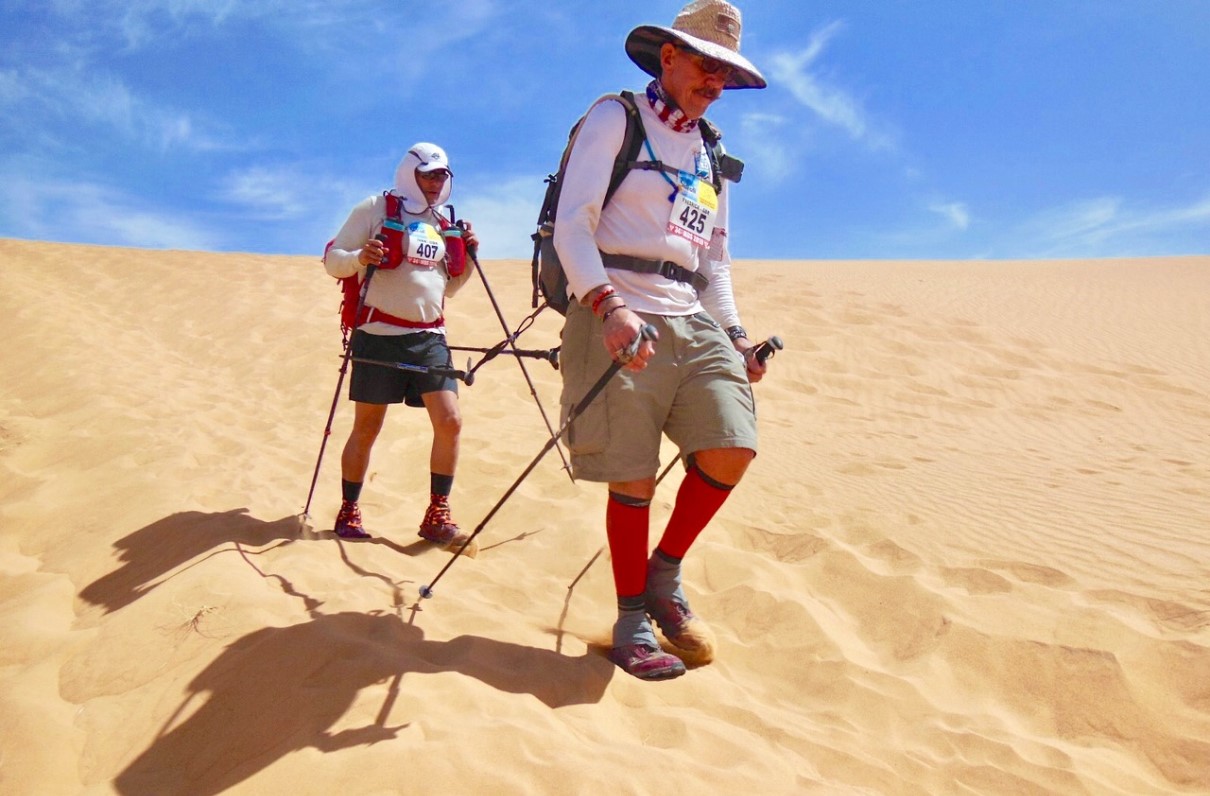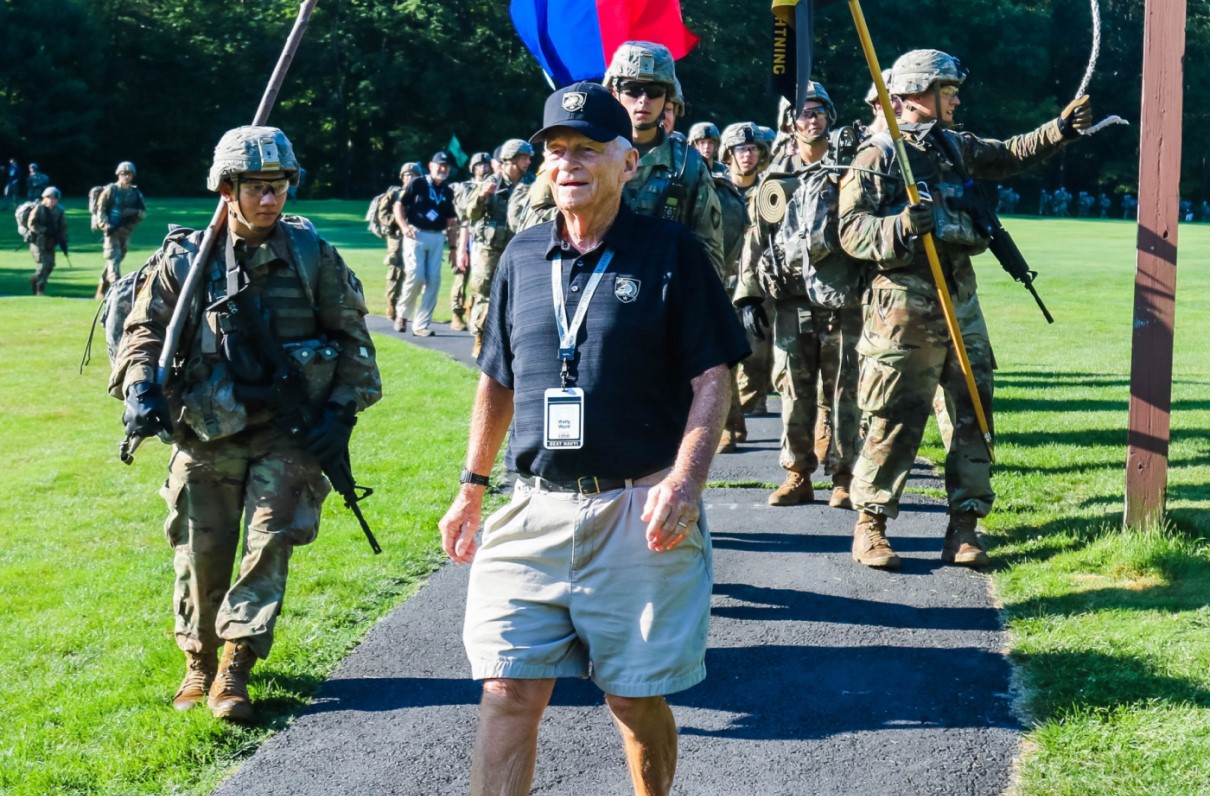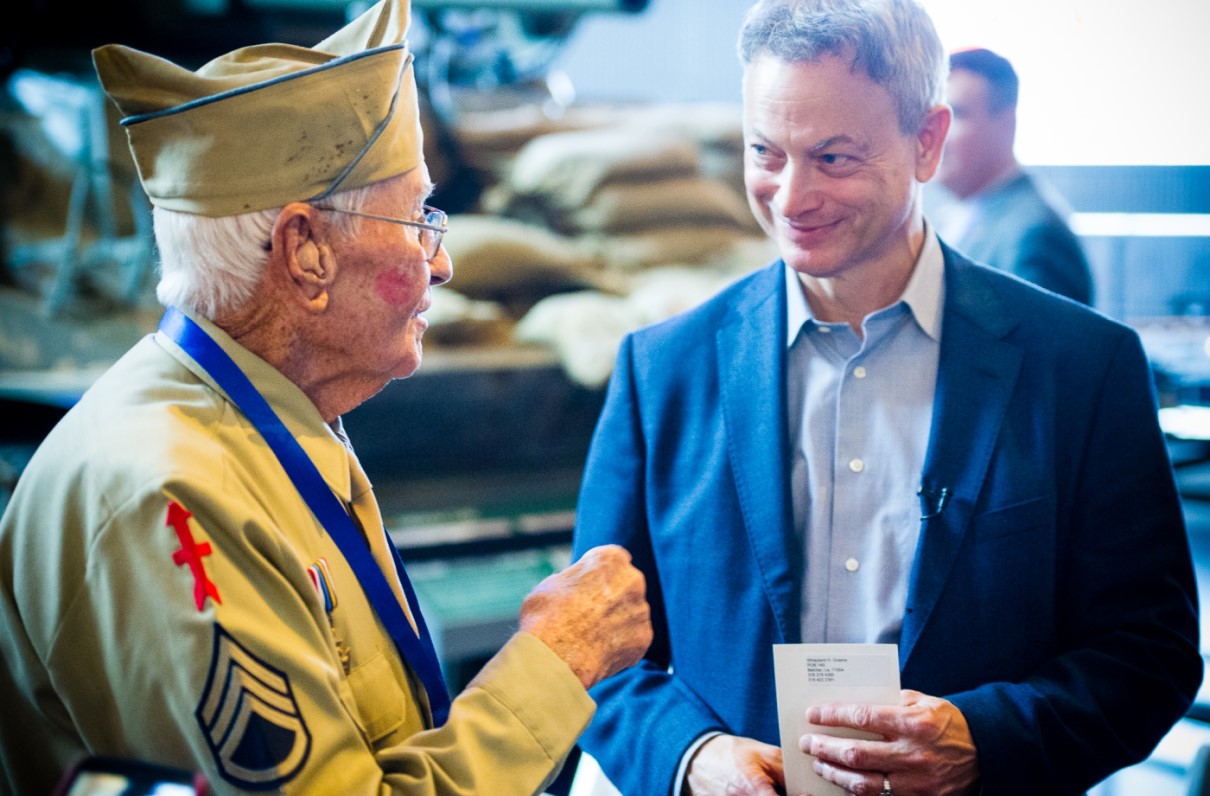(This article by Sara Davidson originally appeared in Military Officer, a magazine available to all MOAA Premium and Life members. Learn more about the magazine here; learn more about joining MOAA here.)
“Rock on your left.”
“Step down.”
“Ramp up.”
“Bush.”
“Camel grass.”
Such were the typical warnings retired Army Col. Fred Dummar tossed out as he led Maj. Ivan Castro, USA (Ret) — who lost his sight during a mortar blast in 2006 — through the Marathon des Sables (MdS) course. The brutal April ultramarathon, which topped Outside magazine’s 2013 list of “The 9 Toughest Ultramarathons,” lasts a week and covers more than 140 miles through the Sahara Desert in southern Morocco.
The men completed the race together — as they have countless others during the past 12 years.
Teaming Up
Castro and Dummar met in 2007 when Castro transferred back into the 7th Special Forces Group at Fort Bragg, N.C. Castro had been in 7th Group as an enlisted soldier before his comissioning, before his deployment to Iraq, before the blast that took his sight. He returned rather than taking a medical retirement after recovering. He is the first completely blind active duty Green Beret.
Dummar, 50, offered to be his morning running partner and guide.
“Never, at the time, did I know how long or how far that was going to go,” Dummar says.
Since then, the men have run more than a dozen marathons and ultramarathons together. They’ve climbed Mount Kilimanjaro, Tanzania; they’ve run with the bulls in Spain.
When they run together, they run side-by-side. Sometimes they hold a piece of looped shoestring pulled taut between them. They hold hands if the terrain is more technical.
Most of their races have been on pavement, reducing the amount of potential hazards Castro has to navigate. Dummar’s role as guide means he’s responsible for keeping Castro on his feet.
“As a sighted person, your subconscious picks [up obstacles]. You can just shut your brain off,” Dummar says. “But to a blind person, they’re huge obstacles. So for me, running, I can’t ever shut my brain off because I have to constantly be steering him around [each obstacle] or warn him of them.”
The desert terrain at MdS added significantly more obstacles, but Castro was up for the challenge. He is the third blind person to finish an MdS.
“I think that’s what really drives me in life,” Castro, 51, says. “I always have a goal — a mission — something to move forward to. I like it when it’s really extreme and tough and challenging.”
In 2013, Castro skied to the South Pole with the nonprofit group Walking With the Wounded. He says a race like MdS is another way he can “beat that wall and that stigma of what people with limitations or blindness can do.”
His future to-do list includes other endurance adventures, such as skiing to the North Pole and rowing across the Atlantic Ocean. “
The Army duo completed the race in just under 60 hours.
“I’m the idiot that comes up with the crazy idea,” Castro says. “Those folks around me that help me get there, those are the people who need to be praised. There’s a lot of preparation and training and care before you start across that line. [For MdS], I had a lot of people back here at home doing a lot of the dirty work.”
For example, Capt. Darlene Matos, USA (Ret), helped with race preparations, such as coordinating required medical tests, ordering dehydrated food, and packing, Castro says.
Leading the Pack
During the race, Castro and Dummar competed alongside sighted participants and weren’t given any special considerations or leeway in regard to the rules, the course, or the time constraints.
During the longest part, Stage 4, they did find themselves singled out for a different reason.
The race route varies slightly from year to year, following a similar format. Stage 4 is always the “Nonstop Stage.”
This year, runners had 34 hours to cover the stage’s 76.3 kilometers, about 47.4 miles, meaning the bulk of the field would go through the night into the next day.
Partway through the night, Dummar says he looked back to see a group of 20 or so runners right behind them. At the next checkpoint, he said Castro asked the group why they’d fallen in behind the men.
“And they’re like, ‘Oh, ’cause there’s two Green Berets, and you guys obviously know how to navigate, so we figured we’d follow you guys,’ ’’ Dummar recalls them saying. “And I thought, ‘OK, I guess one seeing and one non-seeing Green Beret are better; and they have more confidence in us than they do in themselves.”
Digging In
The next day, during Stage 5, Castro and Dummar hit the toughest section of the race.
“It had this ridiculous climb,” Dumar says. “This ridiculously-dangerous-climb-for-a-blind-guy climb. Probably sort of on the edge of dangerous for a sighted person.”
The beginning of the climb included a rock scramble up a dune so steep organizers hung a rope to help participants pull themselves up. The backside of the climb, Dummar says, was worse: An equally steep descent through a rocky valley over loose and unstable footing.
On the scramble down, both men ended up losing their balance, with Castro falling on Dummar, and Dummar falling so hard he snapped one of their carbon-fiber trekking poles.
Racers press on through a grueling stage of the Marathon des Sables in Morocco.
“My eyes teared up,” Castro remembers, “And I thought, ‘What in the hell are we doing out here, what are we trying to prove, why am I doing this?’ That day — at that moment — I had to dig deep, and I’m glad that I had Fred with me. He was there with me, every step of the way.”
That section, the first of the day, took them so long they were in danger of missing the time cutoff at the first checkpoint.
The men ended up clearing the checkpoint with about 10 minutes to spare. They went on to officially finish the race in 59 hours, 43 minutes.
Team Effort
The race’s final stage — Stage 6’s Charity Stage — is an untimed ceremonial 6K to close out the event. For this last bit, the six other assigned members of Dummar and Castro’s tent asked if they could take turns guiding Castro. The group had bonded during their seven days together and wanted to share the final miles.
“Not only were we tent-mates,” Castro said, “but it made them feel like a part of getting me to the finish line.”
As for his favorite event with Dummar, Castro says it’s tough to pinpoint just one.
“We’ve done a lot of events together,” Castro says, “Every one of them has brought laughter and a sense of accomplishment. Man, I’m alive! I’m out here doing it.”



